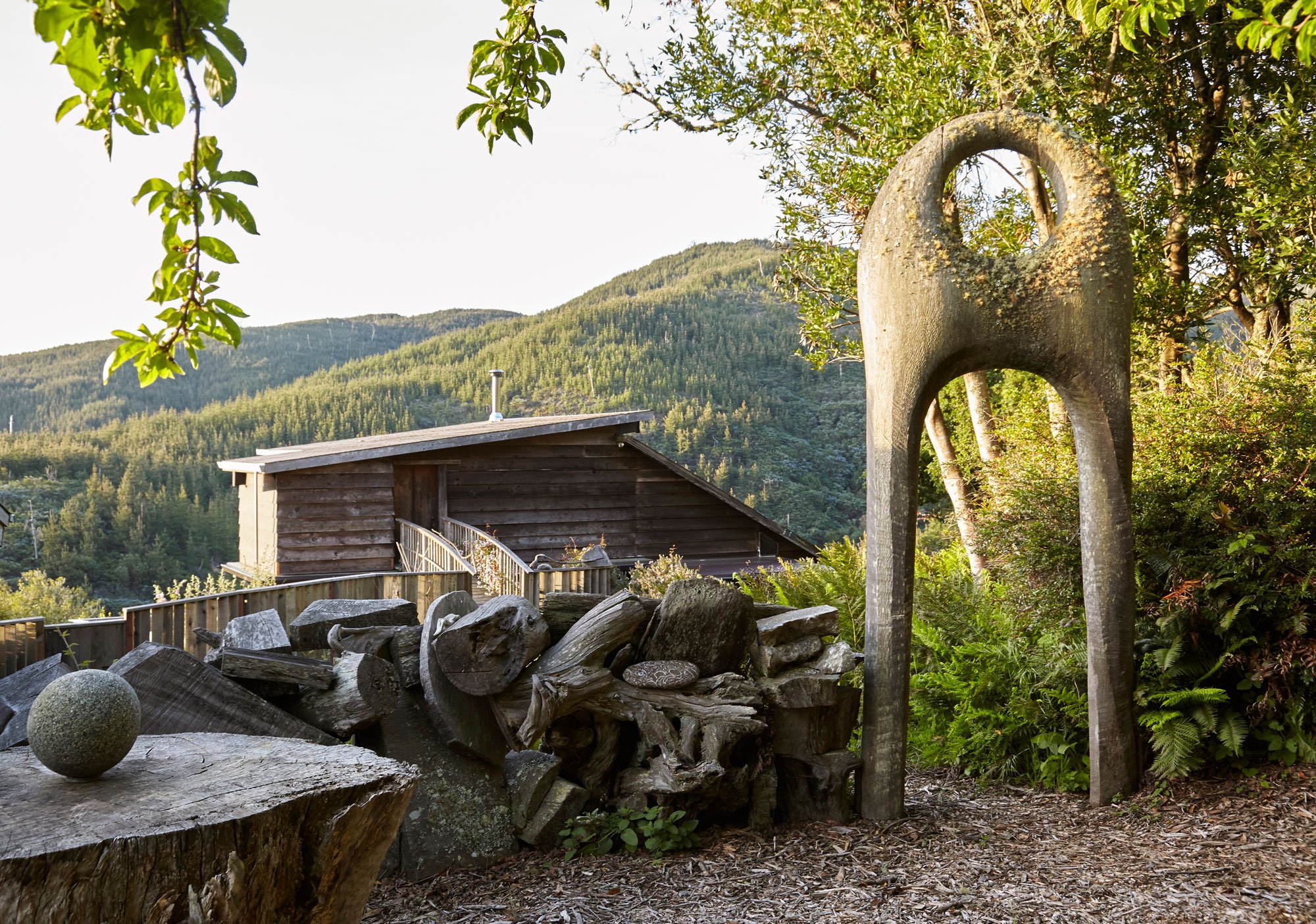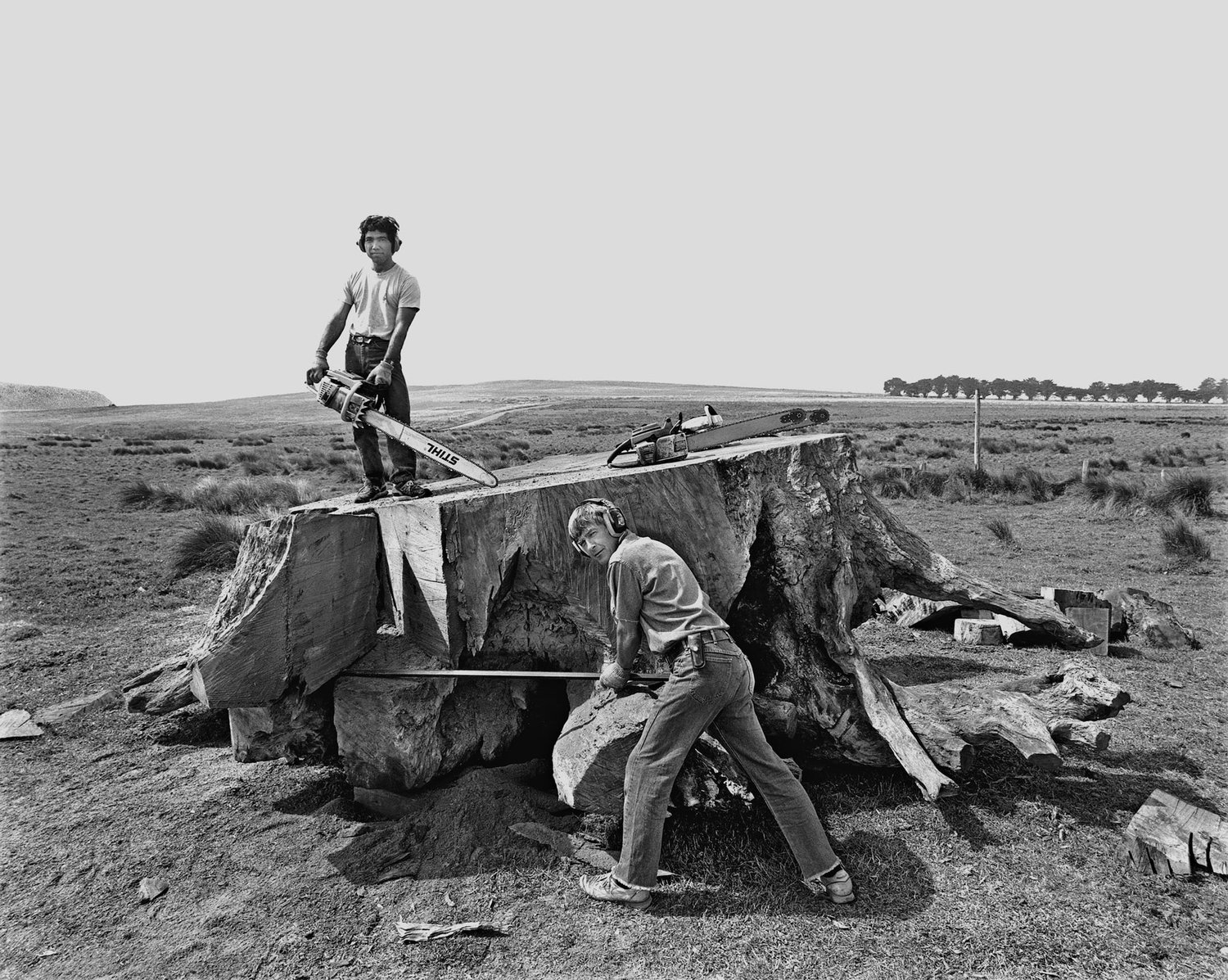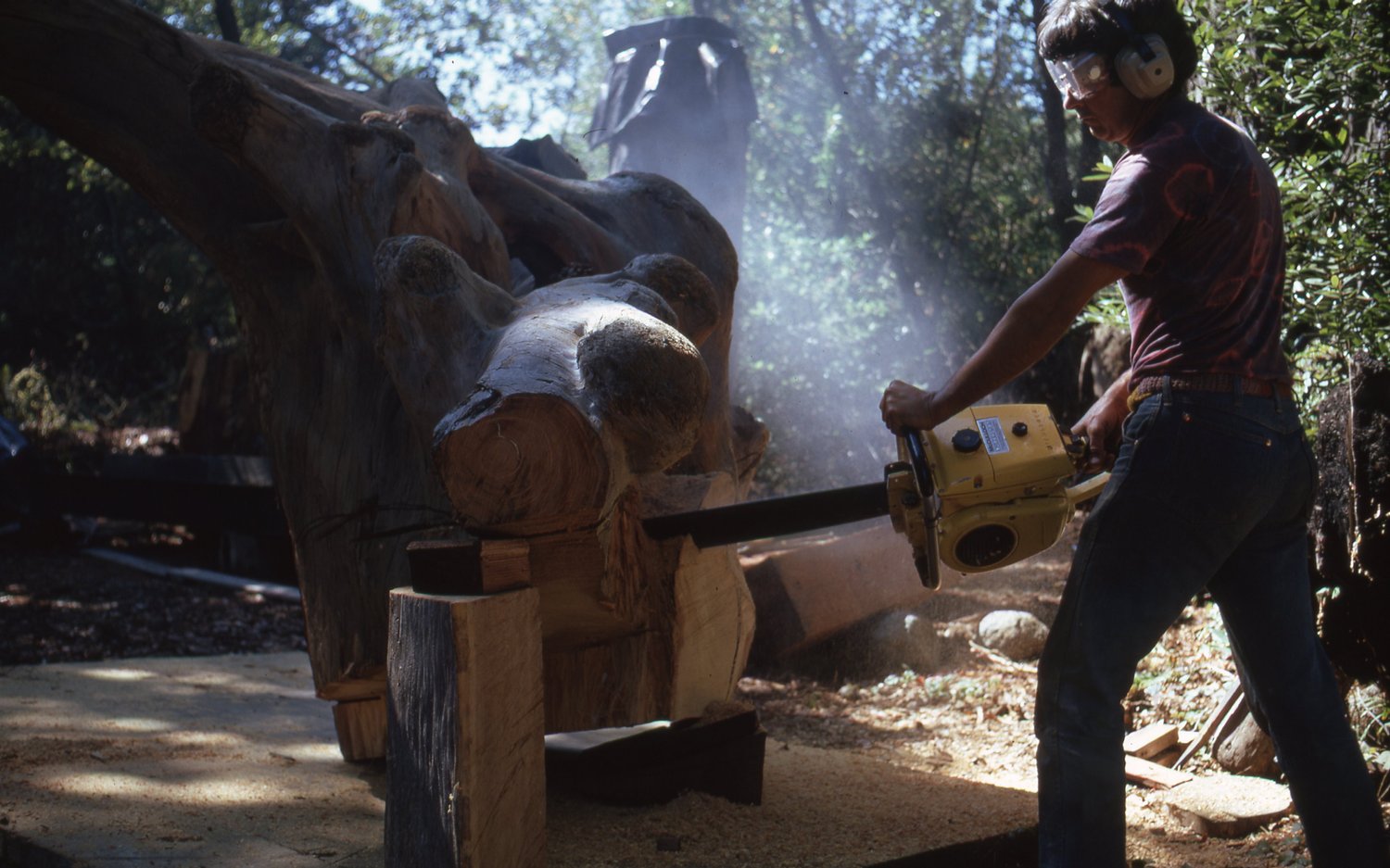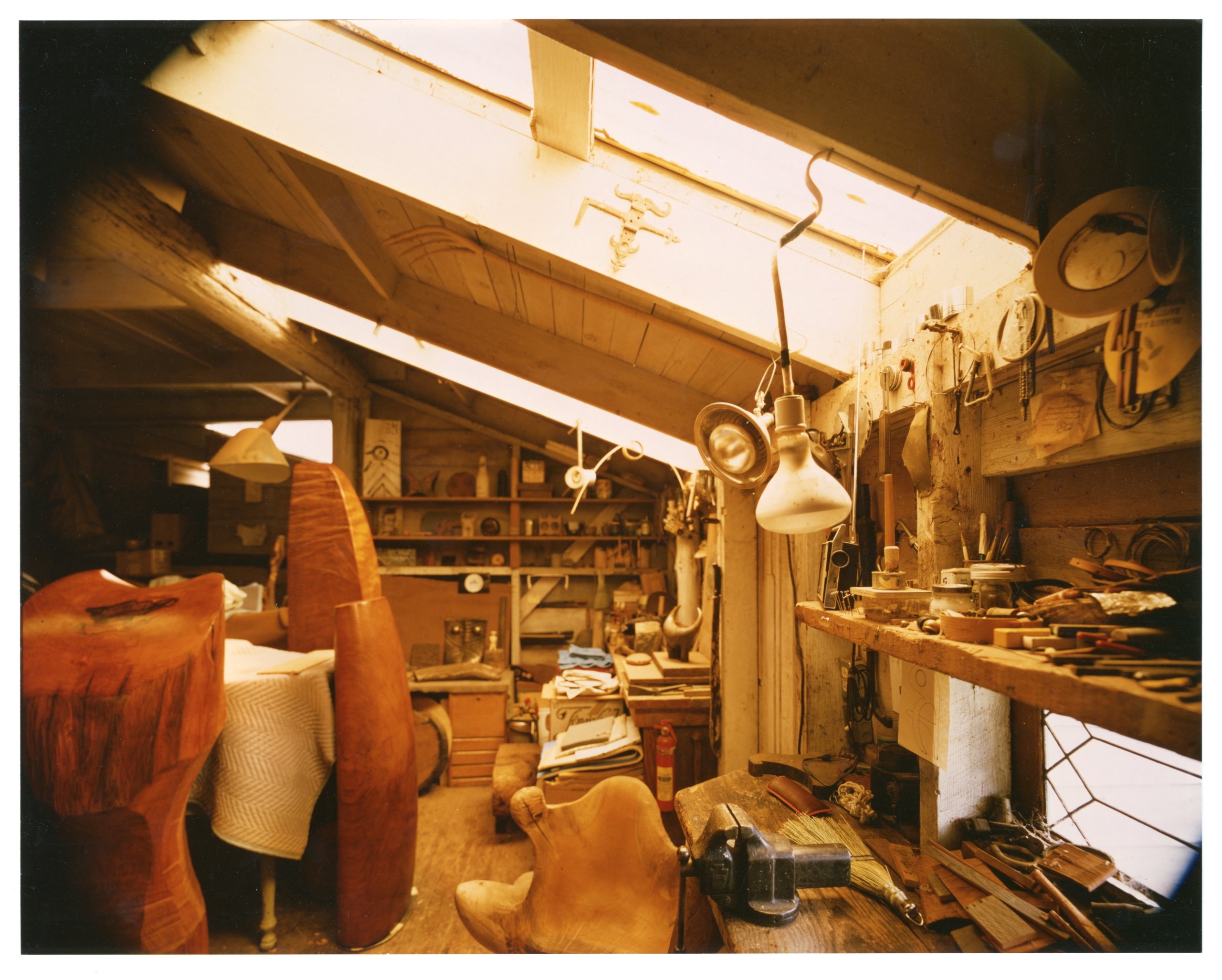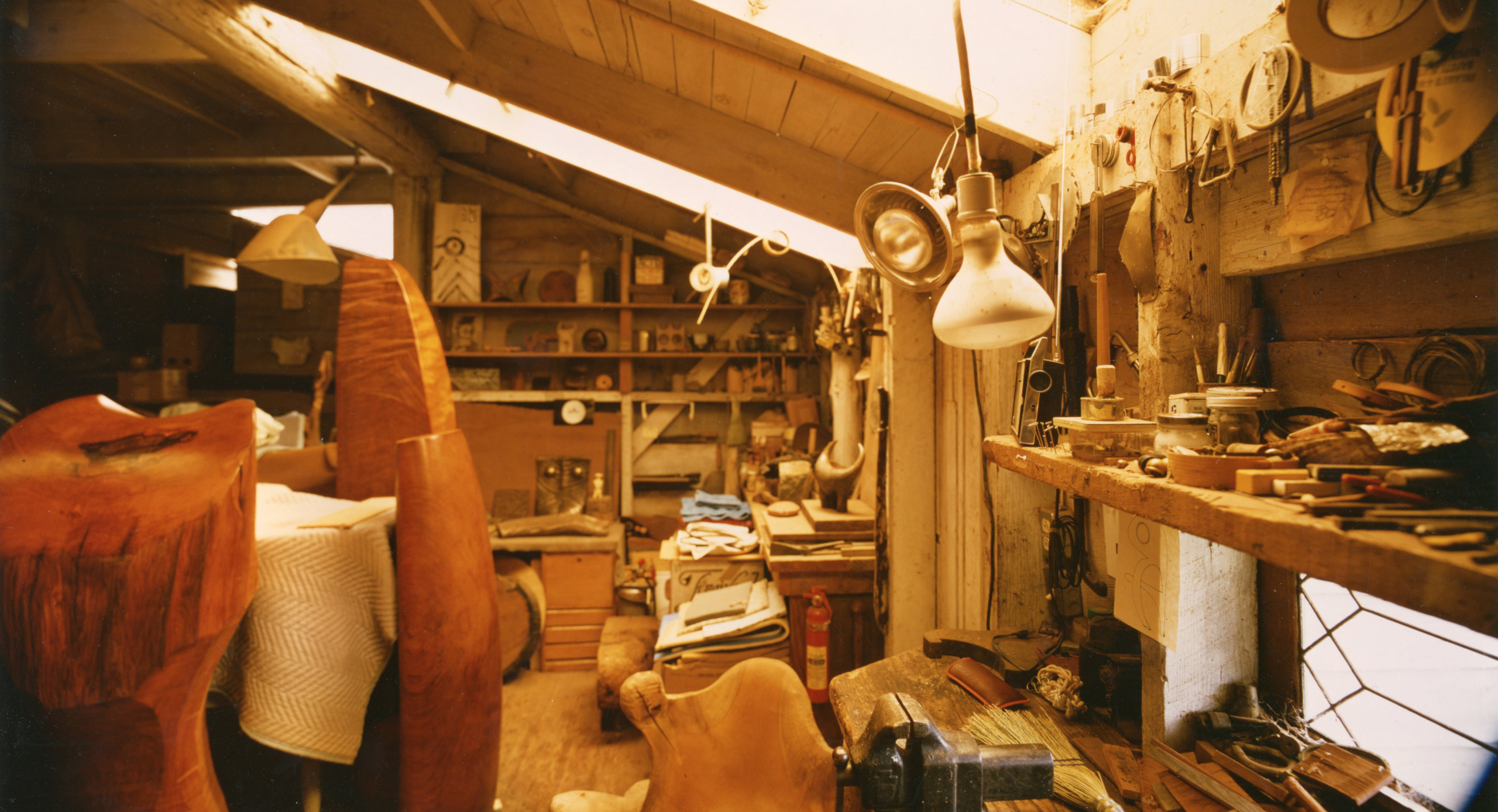
JB Blunk’s studio, c. 1970 ⏤ Courtesy JB Blunk Estate
JB Blunk
b. 1926 in Ottowa, KS, USA
d. 2002 in Inverness, CA, USA
d. 2002 in Inverness, CA, USA
At his self-built home in Inverness, California, J.B. Blunk married art and life, sculpture, craft and design, utility and abstraction, in a way few other artists have done before or since.
After studying physics and ceramics at the University of California, Blunk was drafted into the army to serve in Korea; in the early 1950s he was stationed in Japan, where he had a chance encounter with Isamu Noguchi, who became a mentor and who introduced Blunk to Rosanjin Kitaoji, a master potter who took him on as an apprentice. Blunk was deeply impacted by Japanese ceramicists’ connection to place, and when he returned to California, he chose to settle in the small coastal town of Inverness, in Point Reyes, north of San Francisco.
After studying physics and ceramics at the University of California, Blunk was drafted into the army to serve in Korea; in the early 1950s he was stationed in Japan, where he had a chance encounter with Isamu Noguchi, who became a mentor and who introduced Blunk to Rosanjin Kitaoji, a master potter who took him on as an apprentice. Blunk was deeply impacted by Japanese ceramicists’ connection to place, and when he returned to California, he chose to settle in the small coastal town of Inverness, in Point Reyes, north of San Francisco.
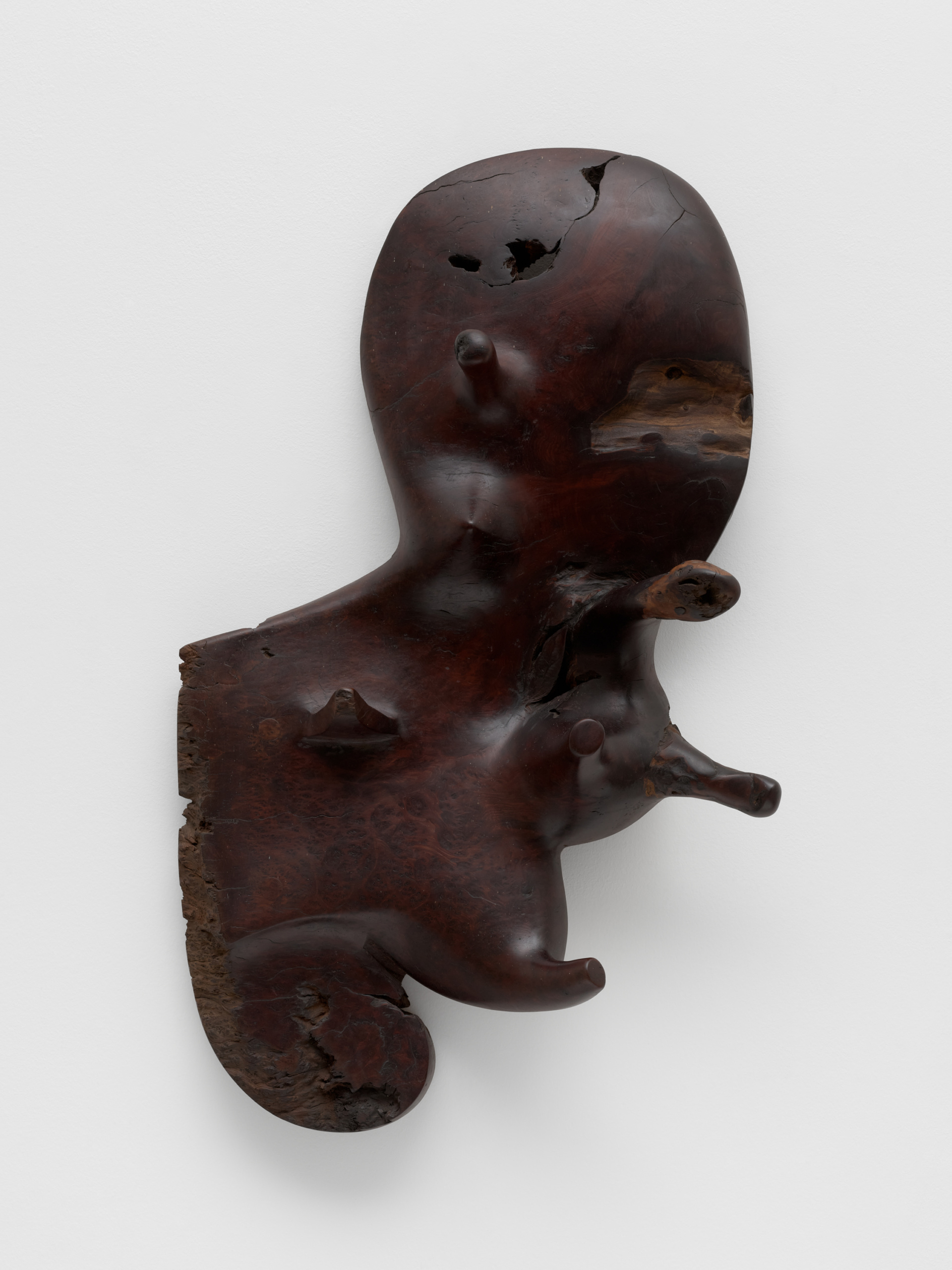
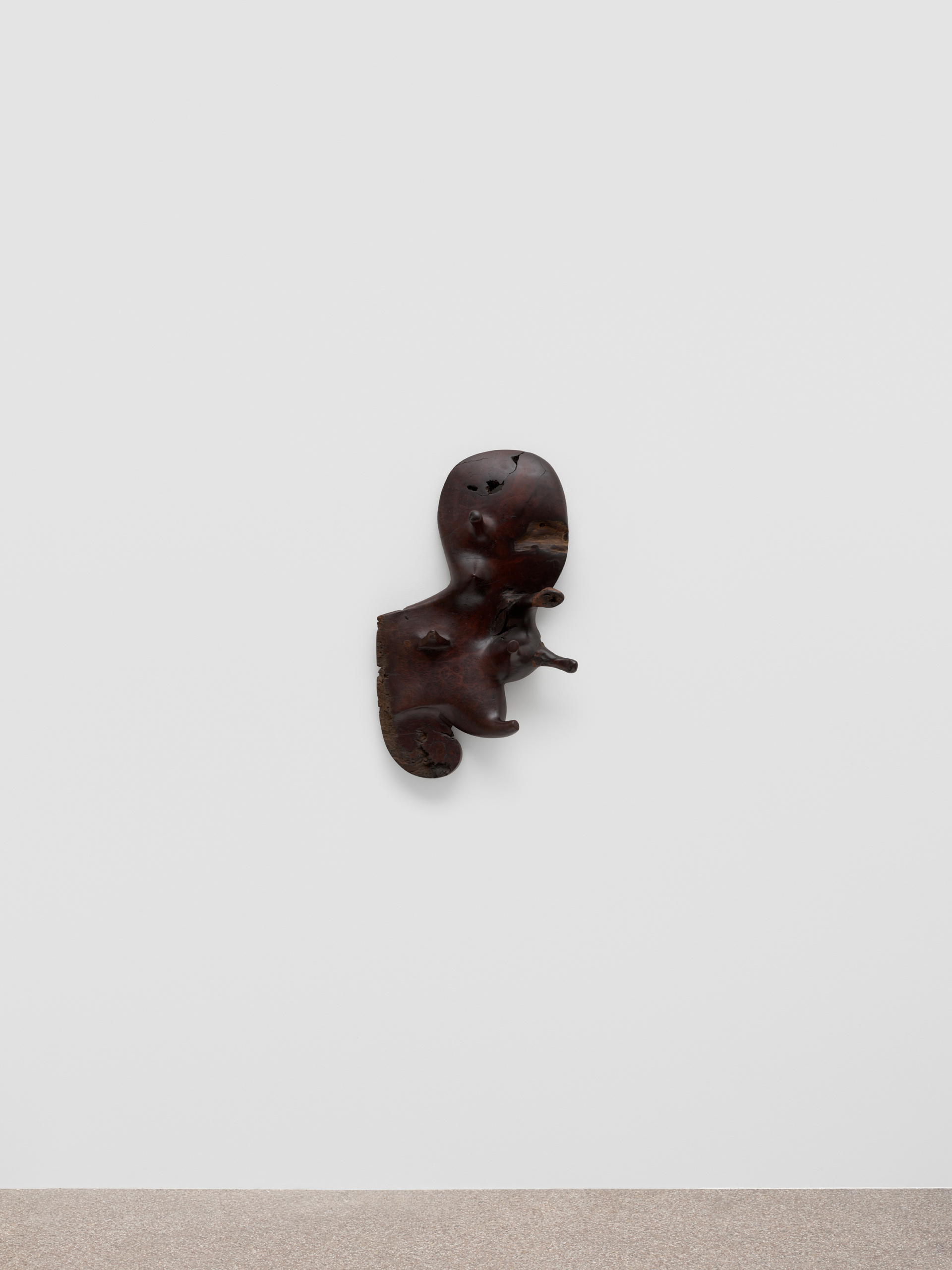
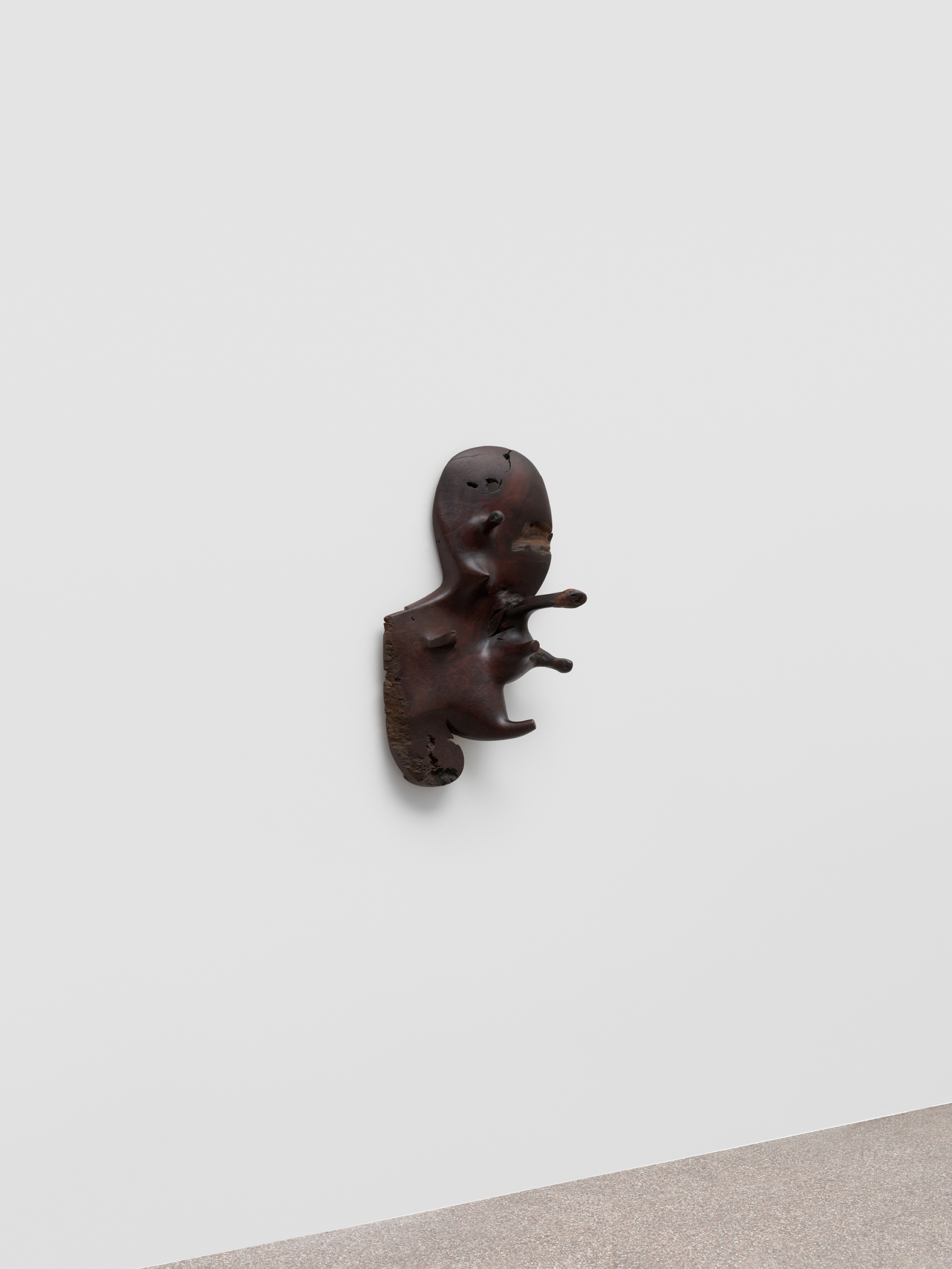
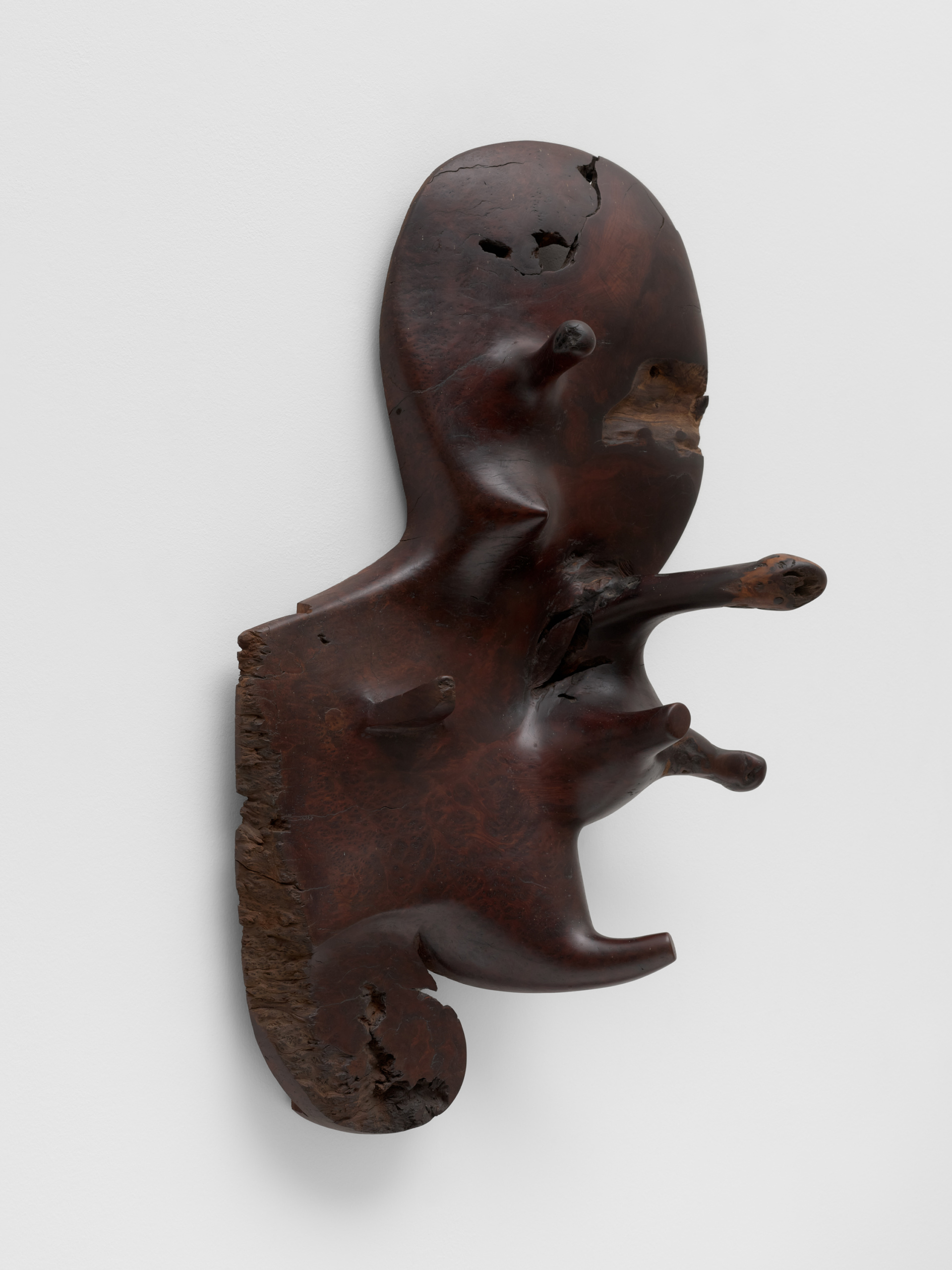
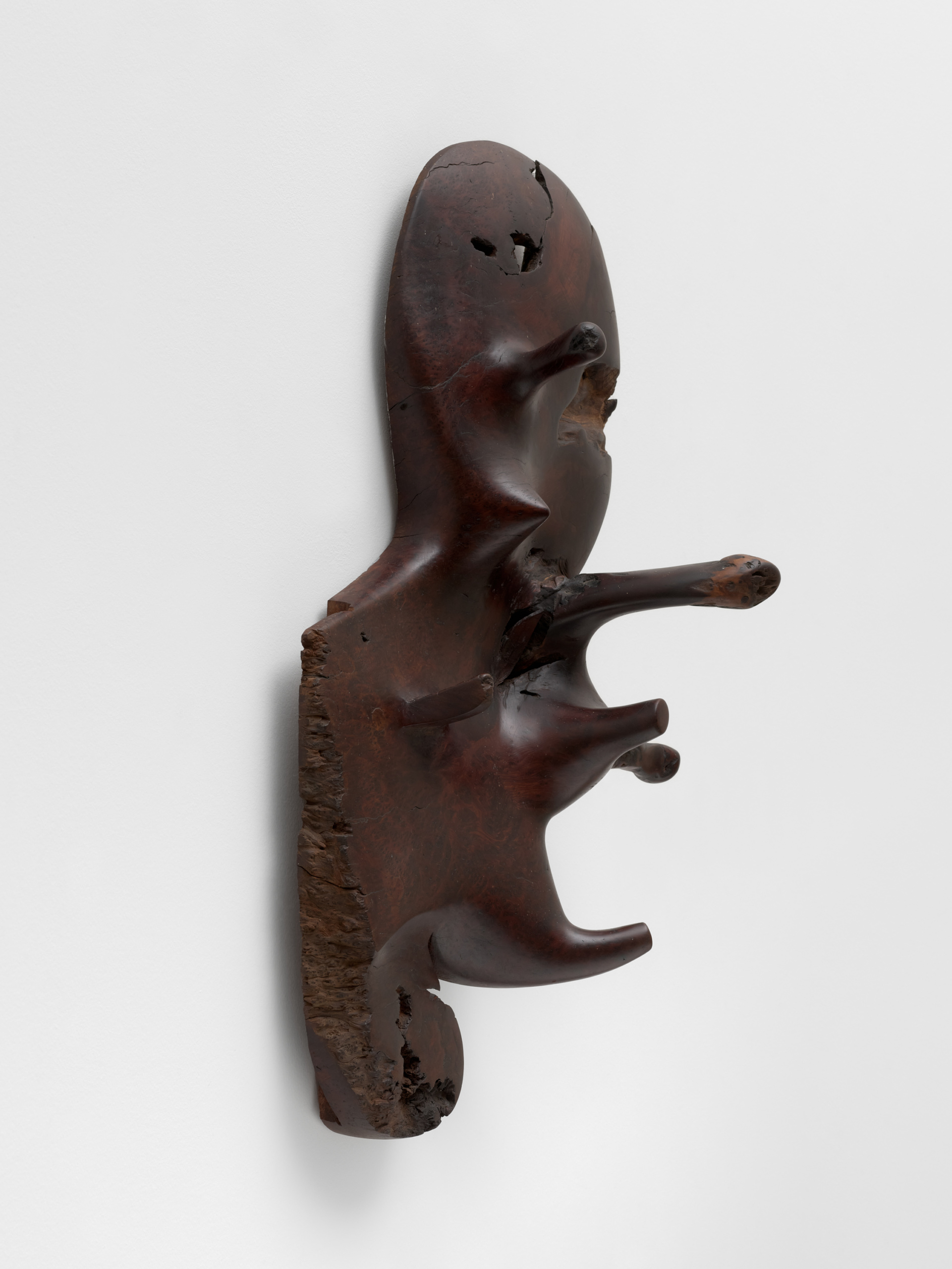
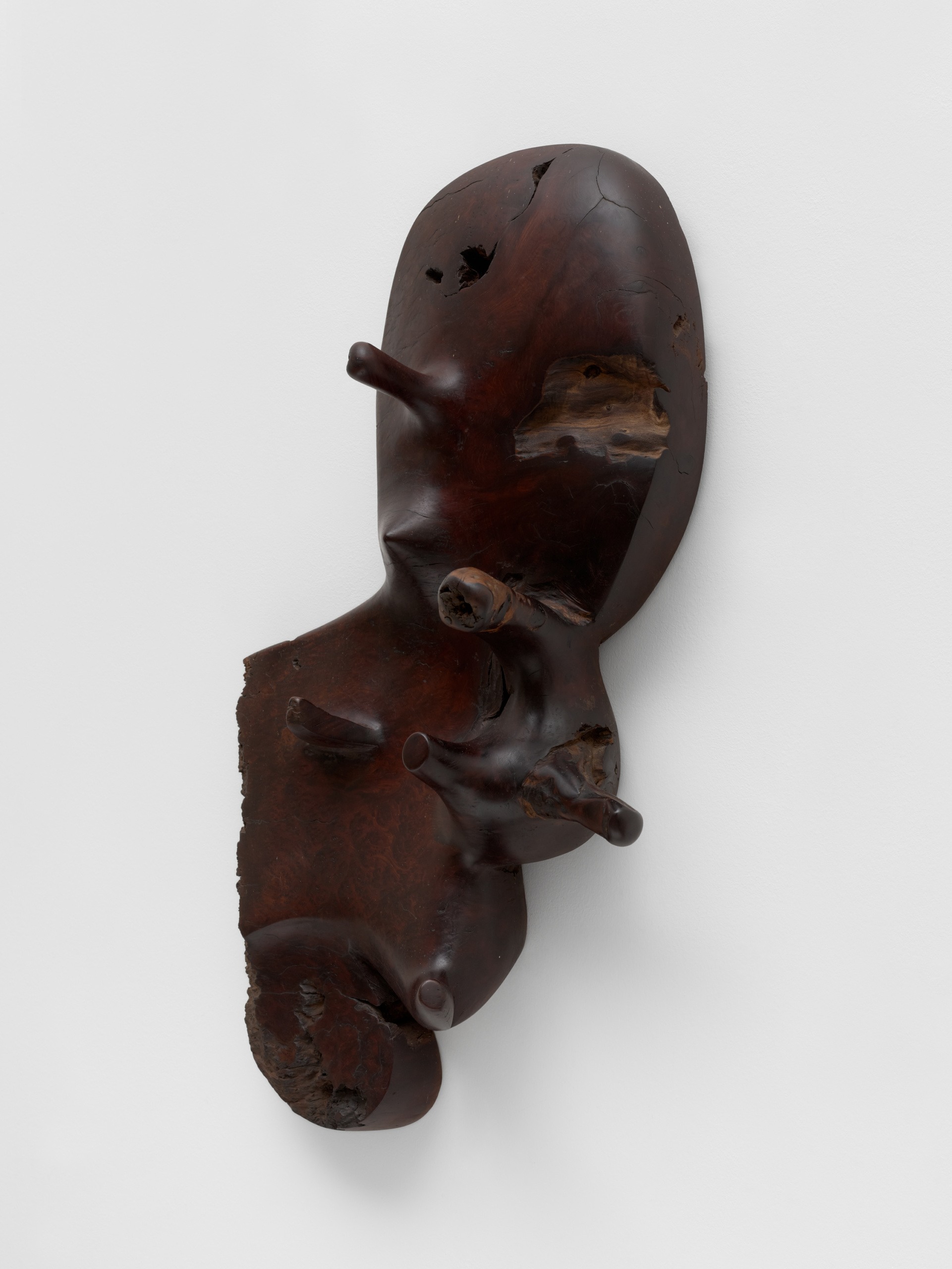
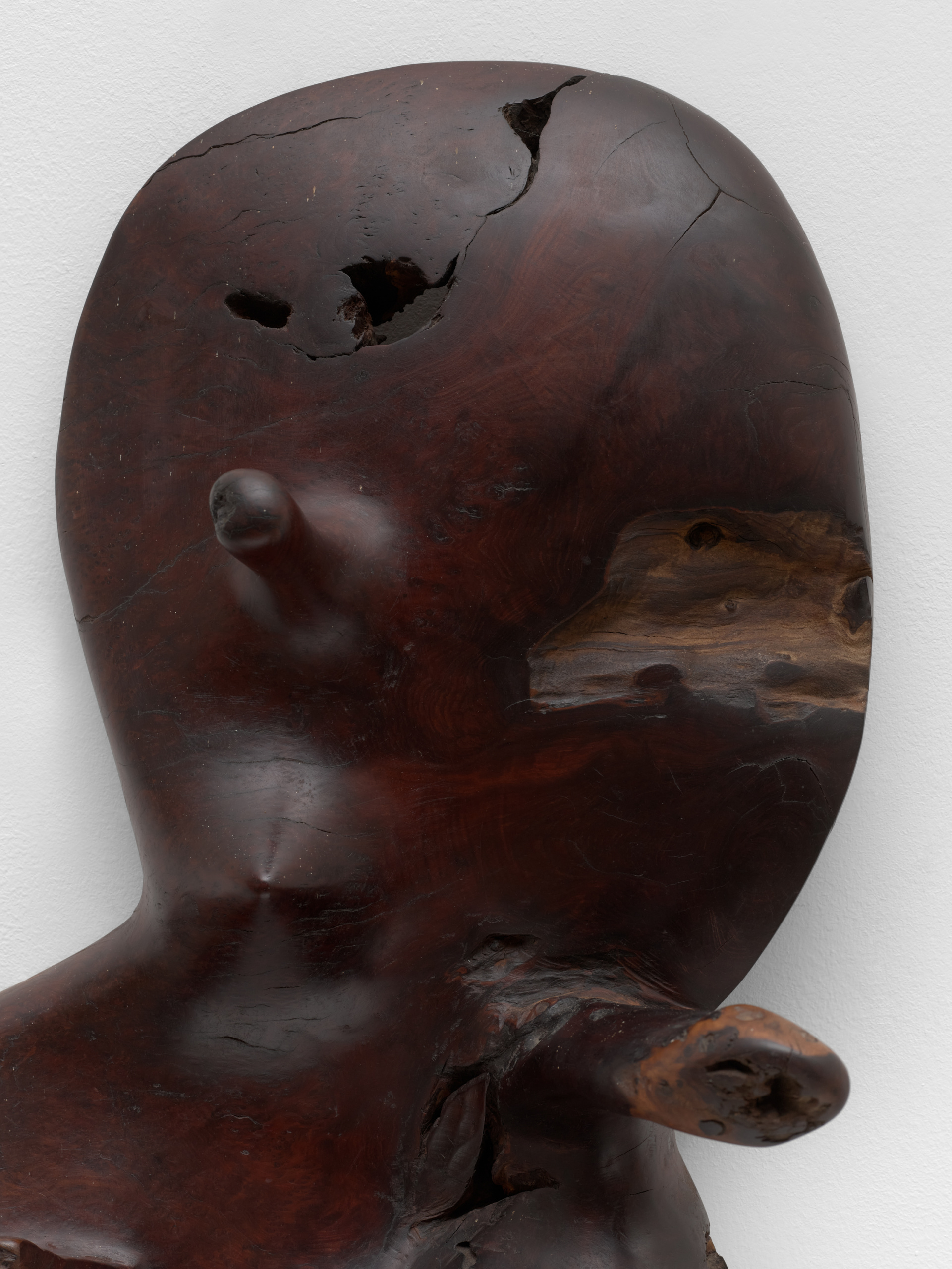
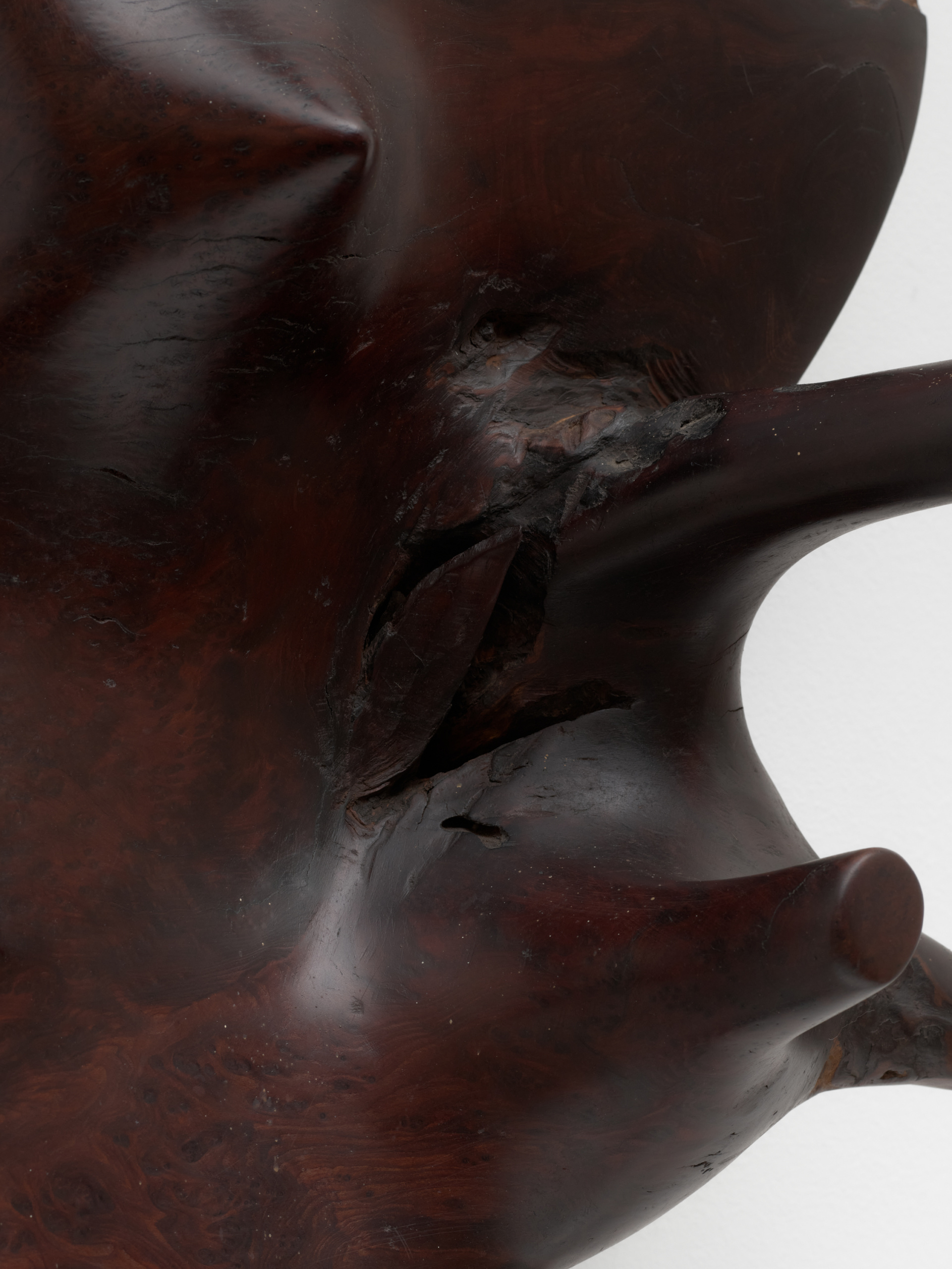
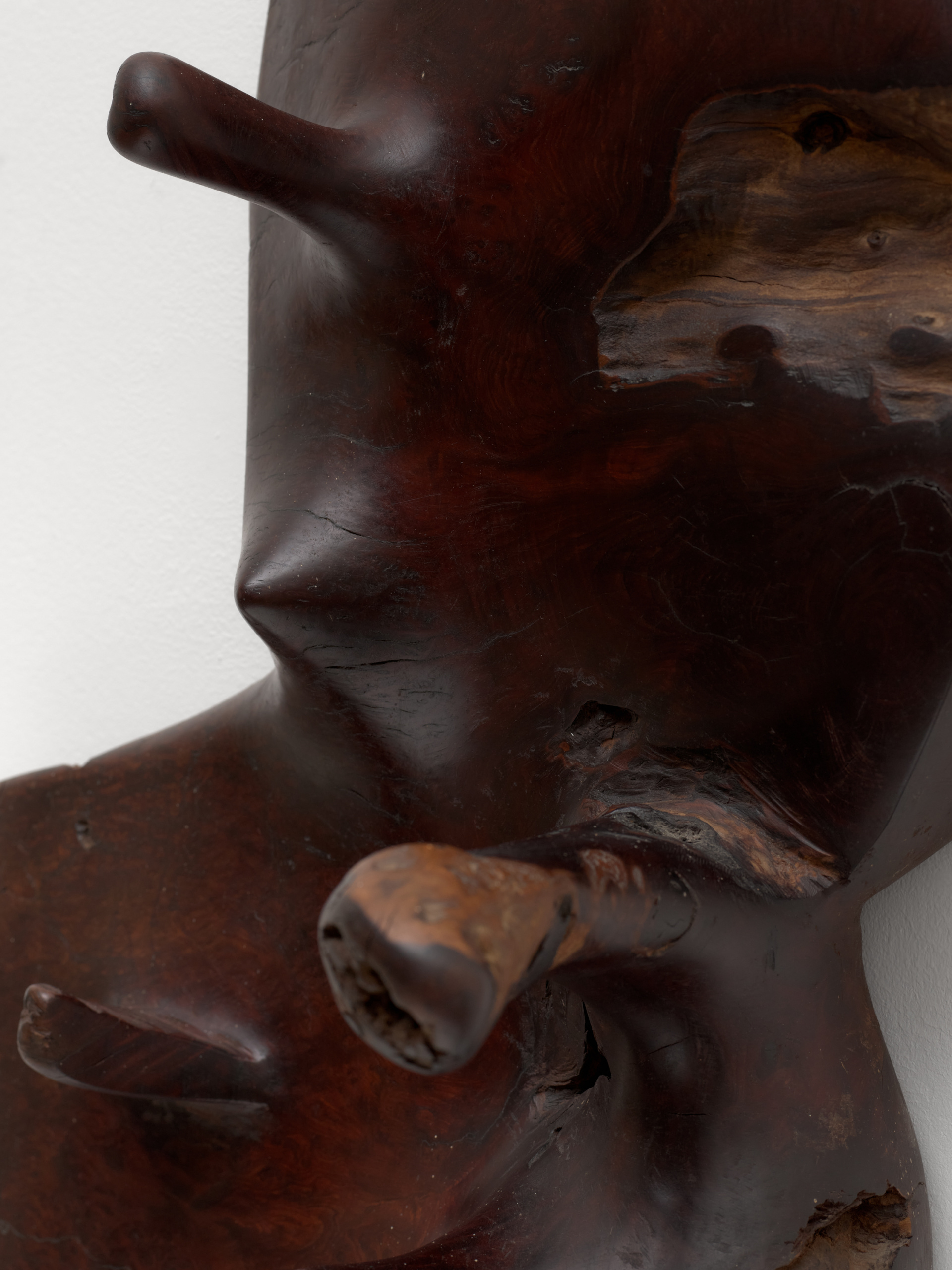
Noguchi connected Blunk with a friend of his who also lived in Inverness – the British Surrealist painter Gordon Onslow Ford, a member of the Dynaton group that also included Lee Mullican and Wolfgang Paalen. Ford shared with Blunk an interest in Eastern philosophy; through him, Blunk met the painter Richard Bowman, who lived nearby. The painting by Bowman in this exhibition belonged to Blunk, acquired after the friends traded artworks.
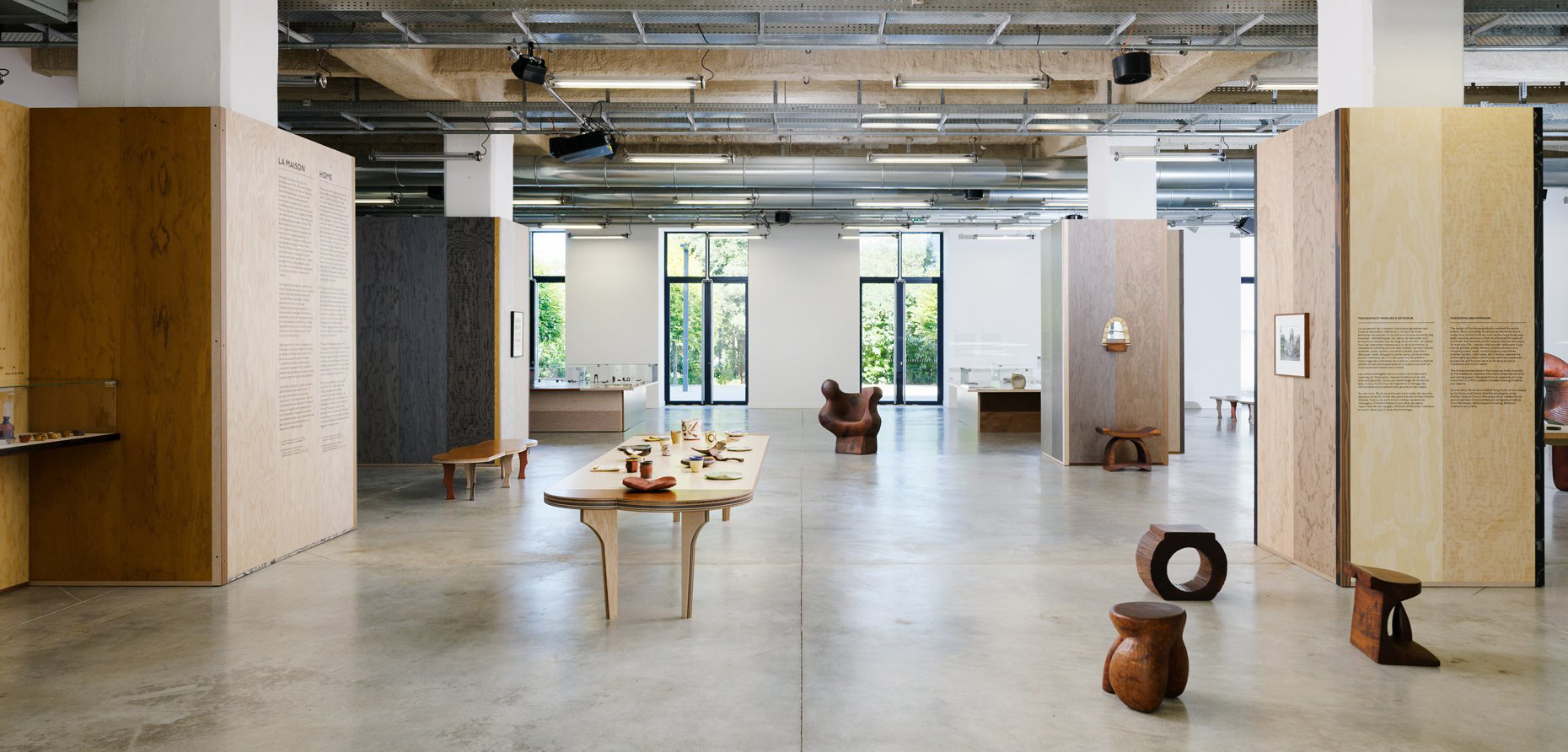
Installation view, JB Blunk: Continuum, Fondation Entreprise Martell, France, 2024
Ford offered Blunk an acre of his property on which Blunk began to build himself a home, mainly using salvaged redwood and pine. Blunk built himself a kiln, too, but from the mid-1960s on, his primary material was wood. He made functional objects, such as benches and tables, but also autonomous sculptures and totems, all of which conformed to his unique, idiosyncratic aesthetic. Blunk’s ethical commitment to place and to renewal led him to use almost exclusively salvaged timber; the forms of his wooden objects often emerged from the knots and burls of these found parts of fallen trees or sections rejected by other woodworkers. Rather than imposing a pre-determined design onto his material, he allowed it to express its own character through his hand.
We thank Kasmin Gallery for their kind collaboration on the group show Once The Block Is Carved, There Will Be Names.
